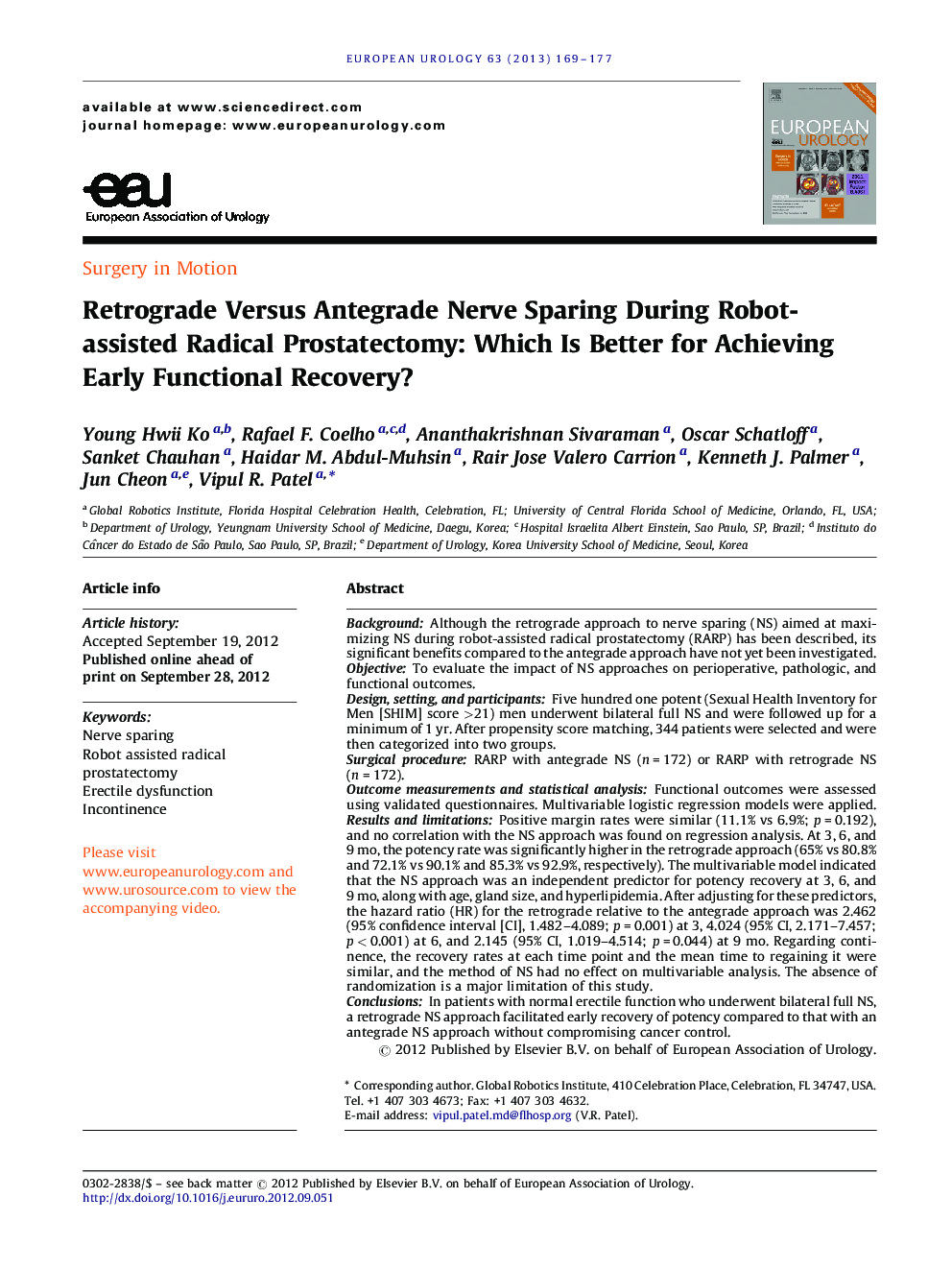| کد مقاله | کد نشریه | سال انتشار | مقاله انگلیسی | نسخه تمام متن |
|---|---|---|---|---|
| 3923917 | 1253082 | 2013 | 9 صفحه PDF | دانلود رایگان |

BackgroundAlthough the retrograde approach to nerve sparing (NS) aimed at maximizing NS during robot-assisted radical prostatectomy (RARP) has been described, its significant benefits compared to the antegrade approach have not yet been investigated.ObjectiveTo evaluate the impact of NS approaches on perioperative, pathologic, and functional outcomes.Design, setting, and participantsFive hundred one potent (Sexual Health Inventory for Men [SHIM] score >21) men underwent bilateral full NS and were followed up for a minimum of 1 yr. After propensity score matching, 344 patients were selected and were then categorized into two groups.Surgical procedureRARP with antegrade NS (n = 172) or RARP with retrograde NS (n = 172).Outcome measurements and statistical analysisFunctional outcomes were assessed using validated questionnaires. Multivariable logistic regression models were applied.Results and limitationsPositive margin rates were similar (11.1% vs 6.9%; p = 0.192), and no correlation with the NS approach was found on regression analysis. At 3, 6, and 9 mo, the potency rate was significantly higher in the retrograde approach (65% vs 80.8% and 72.1% vs 90.1% and 85.3% vs 92.9%, respectively). The multivariable model indicated that the NS approach was an independent predictor for potency recovery at 3, 6, and 9 mo, along with age, gland size, and hyperlipidemia. After adjusting for these predictors, the hazard ratio (HR) for the retrograde relative to the antegrade approach was 2.462 (95% confidence interval [CI], 1.482–4.089; p = 0.001) at 3, 4.024 (95% CI, 2.171–7.457; p < 0.001) at 6, and 2.145 (95% CI, 1.019–4.514; p = 0.044) at 9 mo. Regarding continence, the recovery rates at each time point and the mean time to regaining it were similar, and the method of NS had no effect on multivariable analysis. The absence of randomization is a major limitation of this study.ConclusionsIn patients with normal erectile function who underwent bilateral full NS, a retrograde NS approach facilitated early recovery of potency compared to that with an antegrade NS approach without compromising cancer control.
Journal: European Urology - Volume 63, Issue 1, January 2013, Pages 169–177